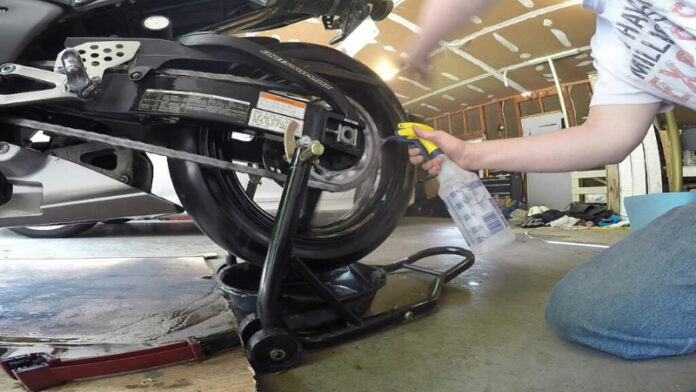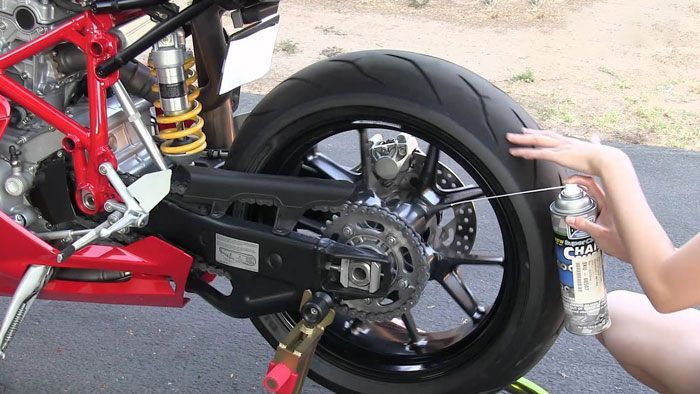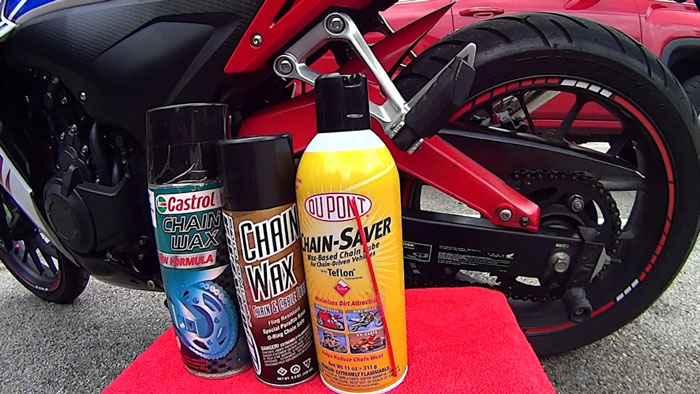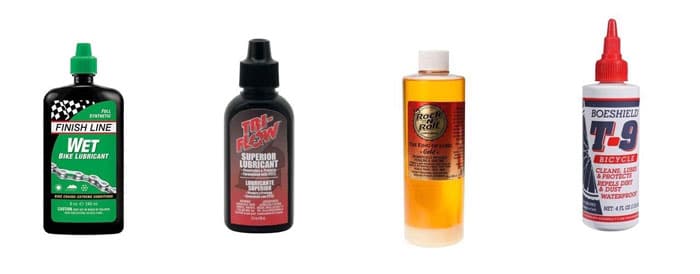Chain Wax Vs. Chain Lube: Are There Any Differences

The motorcycle chain needs regular lubrication, given that it works tirelessly to keep your rear wheel rotating smoothly. Neglecting it will cause it to wear and affect your bike maintenance and performance.
With hundreds of motorcycle chain lubricants available out there at affordable prices, you have no reason to ride your motorcycle with a dry/unoiled chain links.
One question we have been asked many times, however, is the difference between freshly waxed chain and chain lube. And what differences exist between them.
This guide will unravel all the questions you might have regarding the chain lube and waxed chain.
Table of Contents
Chain Wax vs. Chain Lube: What’s the difference?
Both chain wax and brand new chain lube fall under the umbrella of different types of motorcycle chain lubricants. They’re both formulated to lubricate your bike chain and keep it moving smoothly. The ONLY difference between them is the form they exist in—where the chain wax comes in the form of paste and chain lube comes in liquid/spray form.
Despite coming in different forms, both types of chain lubricants come formulated to do the same job of:
Which One Should You Use On Your Motorcycle Chain?
Now that you have discovered the differences between the two chain lubricants, you might be asking yourself which one you should go with.
As we have just mentioned above, both products do the same job, so your final choice will be a matter of personal preference.
With that in mind, knowing the pros and cons of each motorcycle chain lube will help you make a wiser decision on which of the two to use on your motorcycle chain



For the chain lube that comes in a spray or aerosol form, it’s incredibly easy and faster to use as you just need to shoot it on your chain to apply it, thanks to the spray straw they come with.
Another advantage of using the lube is that it tends to penetrate even the hard to reach parts of your chain, translating to a better lubrication job.
However, you might end up making a mess when you try shooting the spray at your chain and miss.
Another drawback: the wet lube tends to attract dirt more easily. And if you let this dirt to build, it turns into a grinding paste that causes wear of your chain components.
When it comes to the chain wax, it comes in a tooth-paste like tube, and you’ll need to use a brush applicator (included) to apply it on the chain.
This makes it a more time-consuming task. Because the wax usually comes in white color, you’ll be able to keep track of where you applied it.
Unfortunately, the paste might not be able to access the tricky areas of your chain. Nevertheless, it tends to stay in place for a longer period of time than the lube…this gives it enough time to work its way deeper into the parts of your chain.
Also, keep in mind that you tend to use more wax than lube in a single application.
If you want to use your motorcycle immediately you lubricate the chain, then you’ll be better off using chain lube. It does the job faster and reaches all the areas of your chain, making things move smoother faster than the wax.
If you ride your bike in dirty and dusty terrains, then you should consider using a chain wax since it has proven to pretty effective at keeping off elements such as dirt, grime, water, etc.
Other Things To Look for In Motorcycle Chain Lubricant
Assuming you have decided whether to go with chain wax or chain lube, now you’re halfway done.
To ensure you get the best lubricant from the multiple products out there, you need to make a few other considerations we have outlined below.



Water resistance
Ensure you get a lube that shows high resistance to water. A lubricant that doesn’t interact with water will stick to the chain better.
Plus, it will help protect your chain against coming into contact with water—the top rust and corrosion agent.
Dust resistance
Look for chain lube or wax that comes with dust-resistant capabilities. Such products tend to repel dust and keep your chain lubricated for an extended period of time.
If you go for a lubricant that attracts dust and dirt, its lubrication effects on your chain will only last for a short time.
The build of dust on your chain can also contribute to the faster wearing of its components and shortening of its lifespan.
Anti-fling properties
The perfect chain lubricant should also be able to hold on to the surface of your chain so that it can keep the chain lubricated for an extended period of time.
You don’t want to invest in a lube/wax that gets flung across the road when you start cruising your motorcycle at high speeds.



PRO TIP: What are your driving conditions like?
If the area you usually drive your motorcycle in is characterized by high humidity and wetness, then you should make sure you get a lube that has excellent water-resistant properties. This will keep your chain safe from rust.
If you like hitting off-road with your bike, make sure you get a chain lube or wax that has excellent dirt resistant properties.
Final verdict
The main difference between a motorcycle chain lube and wax is the form they come in. The lube comes in wet/spray form while the wax comes in paste form. Other than that, both the lube and wax come formulated to do the same job of lubricating your motorcycle chain.
Whether to go with the lube or wax is a matter of personal preference. Study the pros and cons of each of these lubricants as outlined in this guide to help you make a wiser decision.
